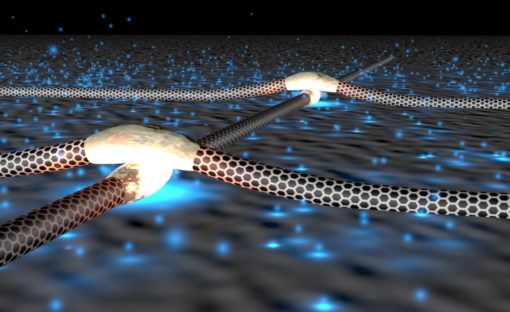
With a nanofibre mesh, it was possible to implement a new nanotechnological device able to release medications in situ for the regeneration of degraded or offended nerves, thus representing a solution for the carpal tunnel syndrome.
A team of researchers of Osaka University, in Japan, has developed a nanofibre mesh that, wound around peripheral nerves that have suffered a trauma, facilitates their regeneration, restoring their original functions.
This nanotechnological mesh incorporates, under the form of methylcobalamin, the B12 vitamin that is of vital importance for the normal functioning of the nervous system and dissolves in time in the human body, where applied.
As first successful experimentation, they have caused an artificial alteration of the sciatic nerve of a lab mouse, maintaining anyway a minimal continuity, and applying this mesh it was possible to regenerate the nervous termination in less than six weeks and to restore the motor and sensor functions completely.
Researches are going on, to assess the effect of these nanofibres for the treatment of the carpal tunnel syndrome, pathology that consists in a degradation of the nervous terminations of the wrist.
It is worth highlighting that artificial links among nerves interrupted by accidents or trauma were already developed in the past under the form of the so-called cross-links, in medical jargon, but applicable in very special cases and only where the nervous continuity was fully damaged, without any stimulus of natural regeneration.
Besides, even if nowadays it is ascertained that the B12 vitamin facilitates a regeneration, the oral administration, by sublingual capsules, has not the necessary efficacy and a device to release it precisely on the spot, where needed, did not exist, yet.
Thanks to this discovery by Japanese researchers, the device seems finally conceived: more in detail, the constituting fibres have a diameter of some hundreds of nanometres, they are made of biodegradable plastic and, through a particular manufacturing process, it was possible to reduce their crystallinity, obtaining such a soft material as to be wound around one or more nerves simultaneously.
The results achieved until now have immediately aroused the interest of some pharmaceutical companies, willing to finance further researches to attain a product clinically exploitable on large scale.



